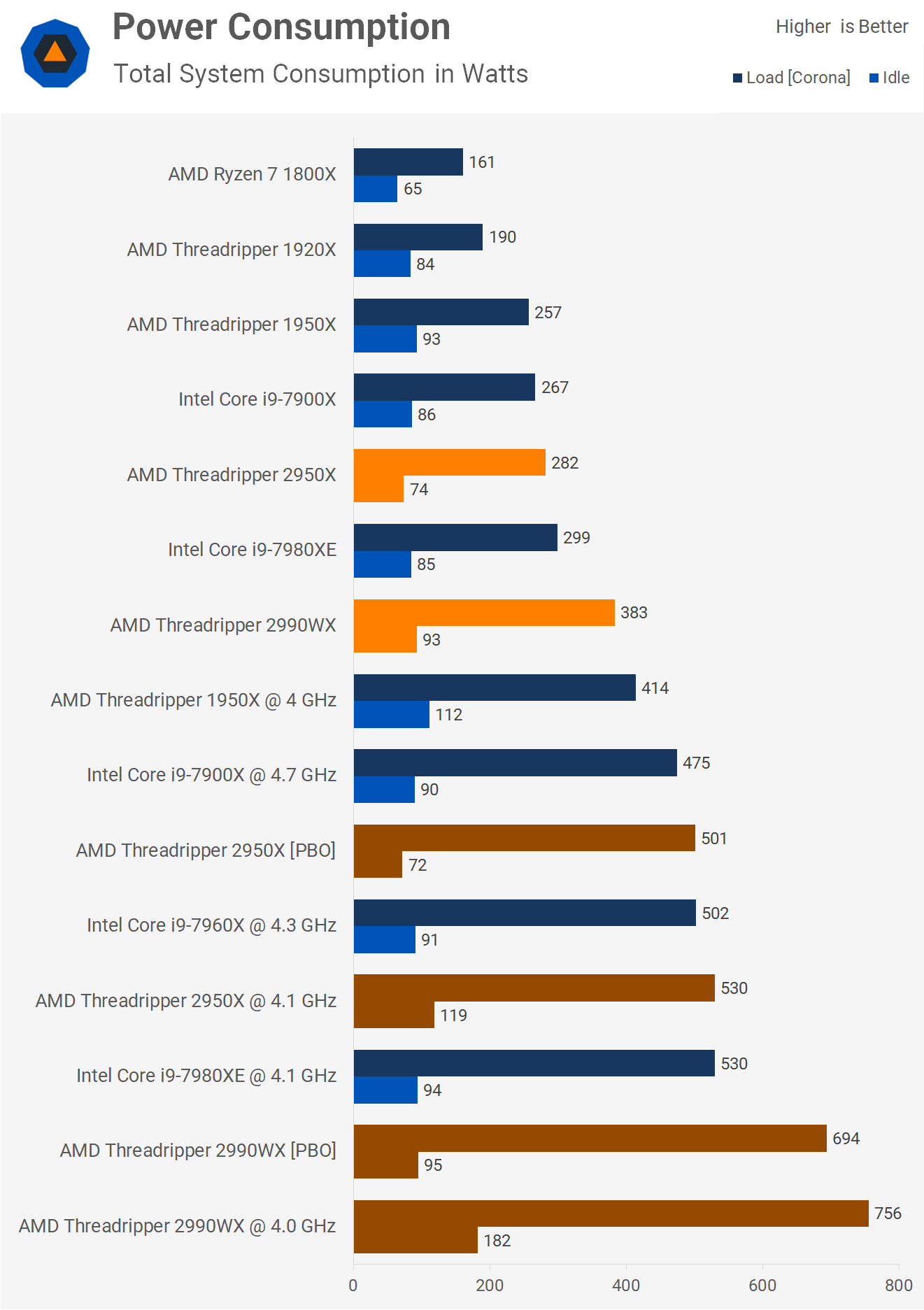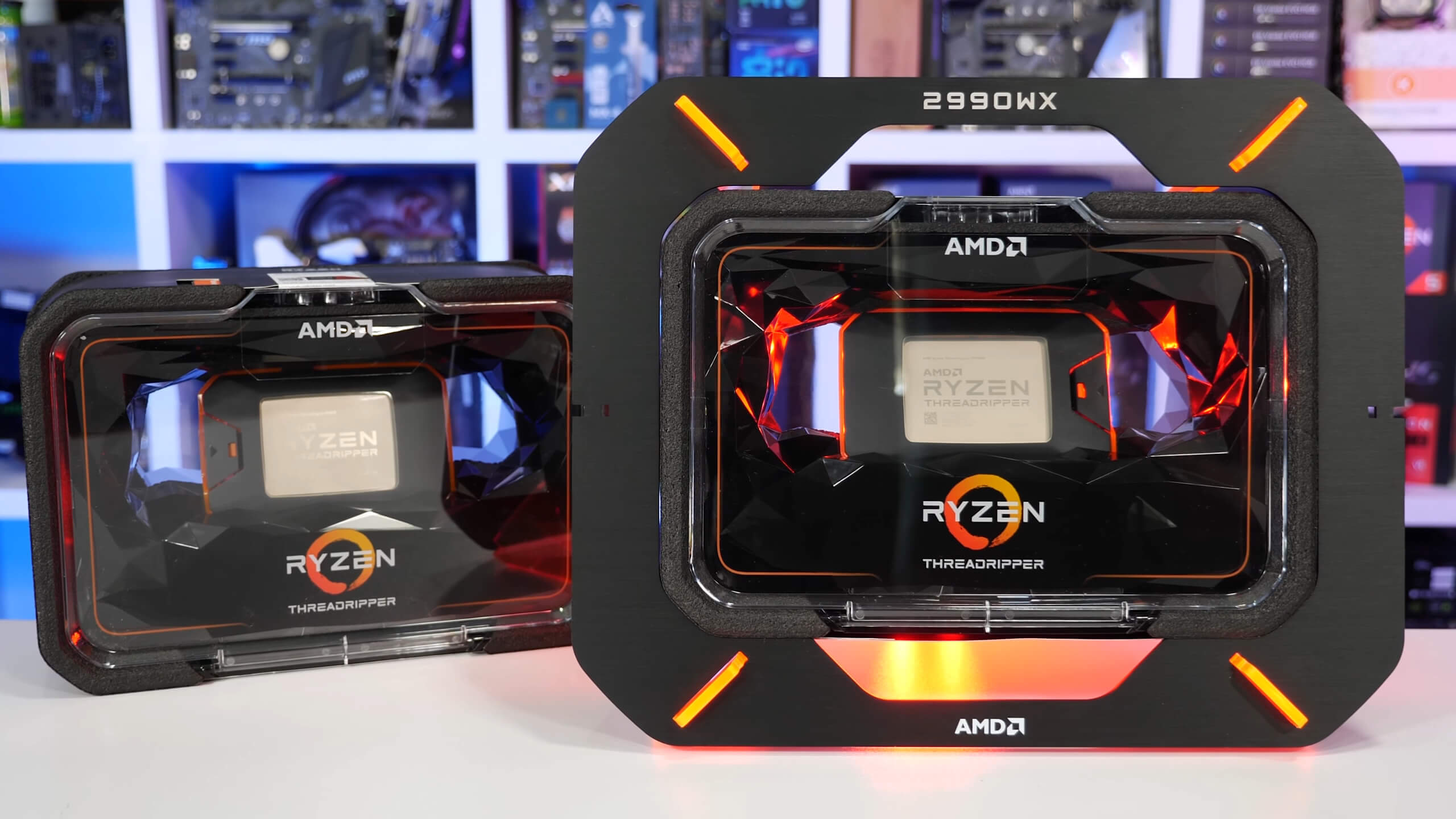Overclocking
Time to overclock and please note we didn't have a huge amount of time to delve into overclocking and it certainly wasn't the focus of our testing. We may follow up later with more overclocking results but for now here's a taste.

For this review I tried two methods of overclocking, using the ROG Zenith Extreme I tried the Asus Precision Boost Override method and then with the MSI MEG X399 Creation the old fashion multiplier and fix voltage method. Both methods resulted in fairly similar multicore performance, but the Asus PBO method provides significantly better single core performance.

Here we see that the fixed frequency overclock yields slightly better results in the Blender test, though I should emphasise only very slightly. The 2950X was able to complete the render 12% quicker while the 2990WX was just 4% faster which is disappointing given we saw a 20% boost in score with Cinebench.

Here we have some pretty alarming results. Overclocked the 2990WX saw at least an 81% increase in total system power draw and up to 97% with the fixed overclocked. Here we can see why fixing 32-cores at 4 GHz using 1.4 volts is a bad idea, the idle consumption was 182 watts, more than a stock Ryzen 7 1800X at full steam and about what the 1920X draws under load.
Using the Asus PBO method the idle draw is roughly halved down to 95 watts but even so the load consumption still hits an eye watering 694 watts, in this test. I say in this test because I obscured total power draw hitting 780 watts in Cinebench and 848 watts for the fixed voltage overclock. This is probably why AMD suggests you pack at least a 1000 watt power supply if you plan on overclocking. Interestingly despite promoting overclocking on these unlocked parts AMD says if you overclock or use PBO you will void your warranty, not sure how they will enforce that but they are claiming any form of overclocking will void your warranty with these 2nd gen Threadripper CPUs.
